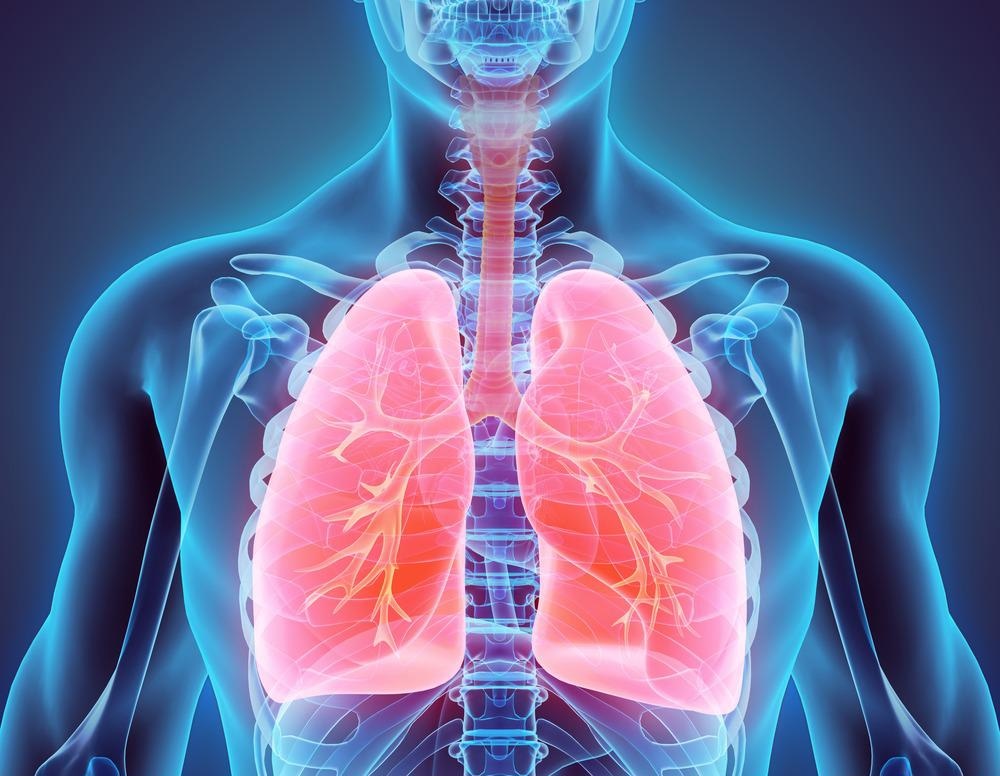In recent years, nanotechnology solutions have gained traction in the pharmaceutical research industry, particularly in terms of new drug delivery methods. Now, scientists are using nanoparticles to deliver life-saving and life-changing medications on patients’ inhaling breath.

Image Credit: MDGRPHCS/Shutterstock.com
In medicine, nanotechnology used in drug delivery enhances the performance of therapeutic drugs, improves drug solubility, enables targeted drug delivery to specific sites in the body, minimizes side effects, and prolongs drug retention times.
Scientists from Wenzhou Medical University recently published research discussing progress in nanotechnology-based drug delivery systems for pulmonary (relating to lungs) drug delivery.
They found that nanotechnology offers various benefits for treating chronic diseases, resulting in significant improvements to treatment outcomes.
Using nanoparticle-based delivery systems like liposomes and micelles in pulmonary drug delivery was demonstrated to be a promising strategy for achieving drug deposition. These technologies also help control drug release in the lungs and minimize the risks of drug toxicity in vivo.
Types of pulmonary diseases | Respiratory system diseases | NCLEX-RN | Khan Academy
Video Credit: khanacademymedicine/YouTube.com
Pulmonary Drug Delivery
Pulmonary diseases are a common threat to human health and are the leading cause of mortality worldwide. They mainly affect the lungs but can also spread to other parts of the respiratory system.
Pulmonary diseases include asthma, lung cancer, and chronic obstructive pulmonary diseases (COPDs) like chronic bronchitis and emphysema.
Pulmonary drug delivery, including inhalers used by people with asthma, has become the preferred route of administering treatments for pulmonary diseases. Here, drugs are delivered directly to the lungs, where they can immediately get to work.
Inhaling drugs has resulted in increased efficacy for pulmonary drugs, rapidly onsetting their action in the lungs, and is also associated with a reduction in systemic side effects. Not only this, but pulmonary drug delivery is also a non-invasive route of administration, making it preferable to the majority of patients.
Challenges in Pulmonary Drug Efficacy
Achieving efficacy with pulmonary drug delivery depends on the device carrying the drug, the dosage, and the deposition of drug particles in the lungs. Precise targeting of pulmonary drug delivery systems also helps to improve the drugs’ efficacy.
Delivering drugs for pulmonary diseases faces challenges, including in vivo instability, poor solubility, and absorption of the drugs. These challenges can be overcome by using nanoparticle-based drug delivery systems that can enhance solubility, improve absorption, and control drugs’ release in the target site.
Nanoparticles in Medicine
Developments in nanoparticle-based drug delivery in recent years have resulted in many benefits. As well as improving drug efficacy and minimizing risks of systemic side effects, nanotechnology has enabled researchers to improve pharmaceuticals’ bioavailability and pharmacokinetics inside a biological entity.
COPD treatments are a good example of this. Here, nanoparticle-based drug delivery systems encapsulate antioxidants to tackle the oxidative stress involved in COPD’s pathogenesis.
Liposomes, micelles, and other nanoparticles are a highly effective means of delivering therapeutic agents to specific target sites in the lungs and controlling a timed release of those agents into the body.
Encapsulating drugs in polymeric delivery systems has also been shown to keep drugs safe from enzymatic degradation before they reach their target site.
Types of Nanoparticle-based Drug Delivery Systems
Materials like liposomes, polymeric micelles, dendrimers, and other nanoparticles are used to deliver drugs to targeted sites in the body. They have been used to deliver both hydrophilic and hydrophobic drugs, achieving deposition in the lung with improved uptake rates by the targeted cells –ultimately improving drug efficacy.
Delivery vehicles based on nanoparticles are highly effective at treating pulmonary diseases like asthma and COPDs.
They reduce dosing frequency while minimizing the toxicity of encapsulated drug molecules and keeping the drug in the target site area for longer.
Lipid-Based Drug Carriers
Chemotherapeutic drugs for lung cancer treatment traditionally face challenges in pulmonary drug delivery methods due to physiological barriers in patients’ bodies. Lipid-based drug delivery systems (LBDDS) have been used both for passive and active targeting due to their permeability, retention effect, and ability to be modified with different targeting moieties.
Liposomes are composed of one or more phospholipid bilayers. The size and number of bilayers in liposomes determine their classification as either small unilamellar vesicles, large unilamellar vesicles, or multilamellar vesicles.
Liposomes administered through the lungs can extend residence time of the drug they have encapsulated, keeping it in the lungs for longer. Doing so achieves enhanced local therapeutic drug effects while minimizing systemic side effects.
Micelles
Micelles are inhalable nanoparticle-based drug carriers for lung cancer treatments. They are polymeric devices that are formed from several block polymers. A hydrophobic section in the interior and a hydrophilic section in the outer section enable them to simultaneously encapsulate both hydrophobic and hydrophilic drugs.
Polymeric micelles are spherical, and their size ranges between 10 nm and 100 nm.
Continue reading: Green Synthesis of Silver Nanoparticles for Biomedical Applications.
References and Further Reading
Amore, E. et al. (2017) Mucoadhesive solid lipid microparticles for controlled release of a corticosteroid in the chronic obstructive pulmonary disease treatment. Future Medicine. Available at: https://doi.org/10.2217/nnm-2017-0072
Rejoice, T.N., et al. (2021). Progress in the Application of Nano- and Micro-based Drug Delivery Systems in Pulmonary Drug Delivery. BioIntegration. Available at: https://doi.org/10.15212/bioi-2021-0028
Disclaimer: The views expressed here are those of the author expressed in their private capacity and do not necessarily represent the views of AZoM.com Limited T/A AZoNetwork the owner and operator of this website. This disclaimer forms part of the Terms and conditions of use of this website.